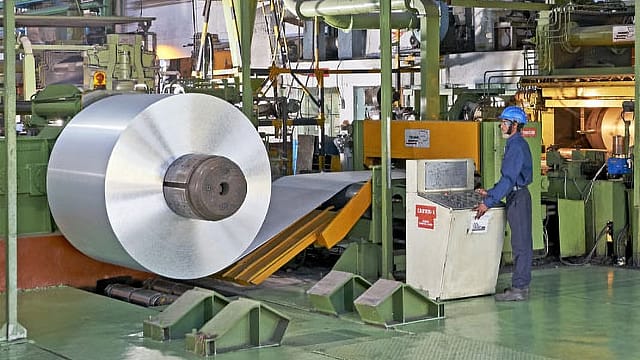Is 40 MT on the anvil for Tata Steel after clocking 26.6 MT?
ADVERTISEMENT

Tata Steel , the largest India-based steelmaker, considering the capacity, may see a tough road ahead in terms of completing its capacity construction target of 40 million tonnes in the next five years. The company, which completed the second phase capacity addition of its Kalinganagar plant on Thursday, has taken an additional two-and-a-half years to complete the expansion because of delays during Covid-19 pandemic and demand fluctuations in the domestic market. The experts expect that the domestic and international markets of commodities will continue to be turbulent because of the changing trade equations and geopolitical issues in the coming couple of years.
On November 12, 2018, when Tata Steel conducted the groundbreaking ceremony for the expansion of Kalinganagar plant to eight million tonnes from three million tonnes, it said the project would be completed in 48 months (by FY23) with a capital cost of ₹23,500 crore. It was months before, in May, the company settled the dues of Bhushan Steel of around ₹35,200 crore to acquire it in the bankruptcy proceedings. When the Kalinganagar project was halfway through, the pandemic hit the expansion activities, followed by economic turbulence.
The 40 million tonne target needs another capacity creation of 13.4 million tonne. The expansion marks one of the largest expansion efforts in the Indian steel sector and signals the company’s confidence in India’s growing infrastructure and industrial needs. At present, Tata Steel produces around 26.4 million tonnes in India, post the Kalinganagar Phase 2 expansion.
January 2026
Netflix, which has been in India for a decade, has successfully struck a balance between high-class premium content and pricing that attracts a range of customers. Find out how the U.S. streaming giant evolved in India, plus an exclusive interview with CEO Ted Sarandos. Also read about the Best Investments for 2026, and how rising growth and easing inflation will come in handy for finance minister Nirmala Sitharaman as she prepares Budget 2026.
To hit its target, the company is pushing forward with a series of strategic investments of at least ₹13,000 crore annually, focusing heavily on brownfield expansions, asset integration, and sustainable technologies. It spent ₹15,671 crore in the last financial year as capital expenditure. The company had strong liquidity of around ₹38,791 crore in FY25.
A key part of the plan centres on the company’s Kalinganagar plant in Odisha. Already a critical asset in Tata Steel’s portfolio, the plant is undergoing a phased expansion to increase capacity to 13 million tonnes per annum (MTPA). The site is set to emerge as one of the country’s most advanced integrated steel facilities once the upgrade is complete.
The company is also ramping up operations at Neelachal Ispat Nigam Limited (NINL), a struggling public sector unit it acquired in 2022. Tata Steel plans to expand NINL’s capacity from its current one million tonnes to five-and-a-half million tonnes, further contributing to the company’s 2030 goal. To support these production increases, Tata Steel is reinforcing its raw material supply chain.
Besides expansion, the company has committed to a 40% reduction in carbon emissions by 2030 and net-zero emissions by 2045. A scrap-based electric arc furnace (EAF) with a 0.75 million tonnes capacity is already underway in Ludhiana, Punjab, designed to produce lower-emission long steel products. The company is also looking to convert its capacity in the UK to the EAF method.
India’s steel demand is expected to rise sharply in the coming years, driven by government-backed infrastructure projects and urban development. However, the import of cheap steel from China and other countries will continue as a threat to the domestic industry.
